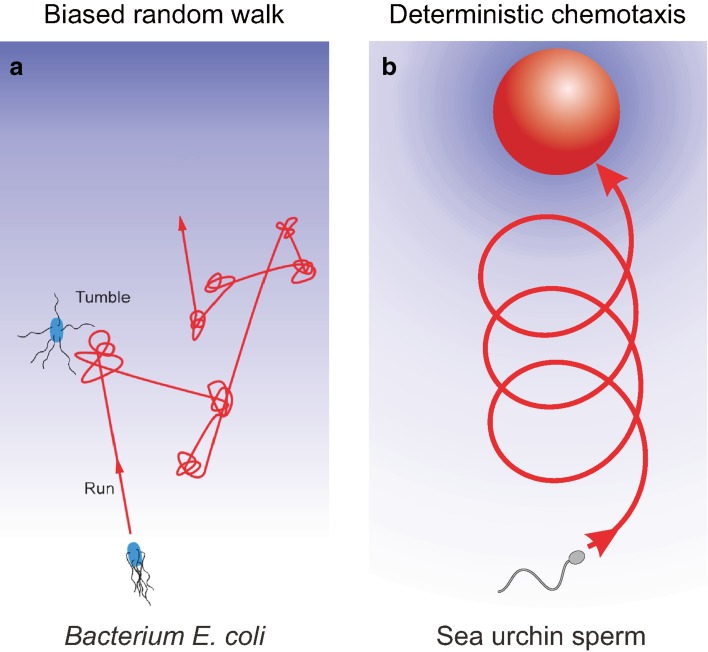Fig. 4.
Sperm vs. bacterial navigation paradigm. a, Bacteria like Escherichia coli, use a navigation strategy that is adapted for small cells with high rotational diffusion that randomizes swimming direction. The strategy followed consists into alternation between straight swimming (runs), and stochastic changes in direction (tumbles). For chemotaxis, the duration of runs is extended when swimming up the chemical gradient. The interval between runs is about 1 s, which is shorter than the time at which cell orientation is fully randomized by rotational diffusion (Berg 1993). b Large cells like sperm are less prone to rotational diffusion and thus have a longer swimming persistence, which allows for a deterministic search strategy. At rest, sea urchin sperm swim along circles (near a wall) or helical paths (in 3D). Both swimming paths are characterized by a periodic component. When immersed in a chemical gradient, the periodic component of swimming results in periodic stimulation of the cell. Periodic stimulus is translated into deterministic steering by simply producing a periodic modulation of the path curvature (in 2 and 3D) and path torsion (in 3D) (Alvarez et al. 2014; Jikeli et al. 2015). Chemical gradient is shown in shades of blue

